Brake rotor rust — Is It Something To Worry About?
Brake rotor rust is not normally a problem; here’s when you should worry.
All brake rotors rust. However, some rust faster than others. How quickly it rusts and how badly it rusts depends on the quality of the brake rotor and the cast iron used and in some cases, how long it sits unused. Surface brake rotor rust on the friction ring is not normally a problem because it usually wipes off as soon as you brake.
Why brake rotors rust
Brake rotors are made from cast iron and just like cast iron cookware, they’ll rust if they come in contact with water or humidity. Letting your vehicle sit unused will cause the brake rotor rust on the face, hat and cooling vanes. When you finally drive the vehicle, the brake pads will wipe the surface rust off the friction ring area and after a few braking cycles, you’ll have full braking power.
However, if you let the vehicle sit for too long, the rust can pit the surface of the friction ring and that pitting can’t be wiped off though brake applications.
But there’s a difference between surface brake rotor rust and severe rust the etches into the metal.
Here are some examples of severe brake rotor rust that can’t be removed by normal braking. These rotors must be replaced; they can’t be saved by machining.
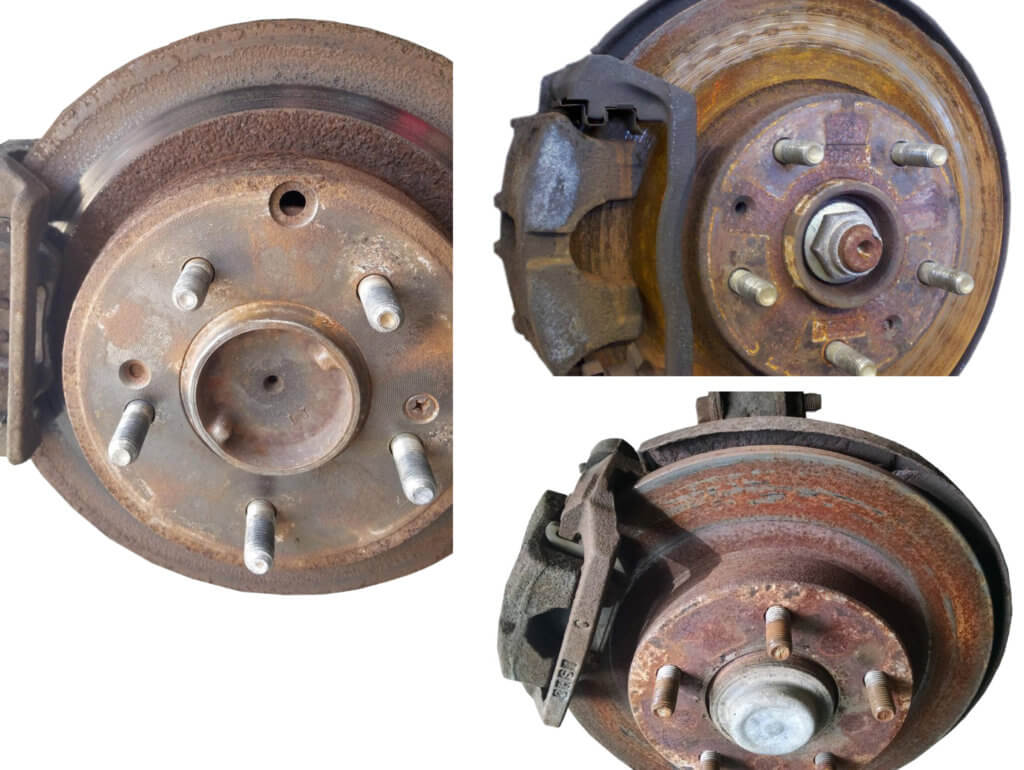
The rust on these rotors is so deeply etched that they can’t be saved. You would have to machine so deep that the rotor thickness would be below the discard specification
How to prevent brake rotor rust
Driving the vehicle is what prevents rust on the friction ring
Braking generates heat and heat drives off moisture. So driving on a regular basis is what keeps your rotors rust free.
Letting it sit unused in humid conditions will always cause them to rust. Driving the vehicle heats up the rotor to evaporate off moisture and the brake pads wipe off surface rust.
Purchase coated brake rotors
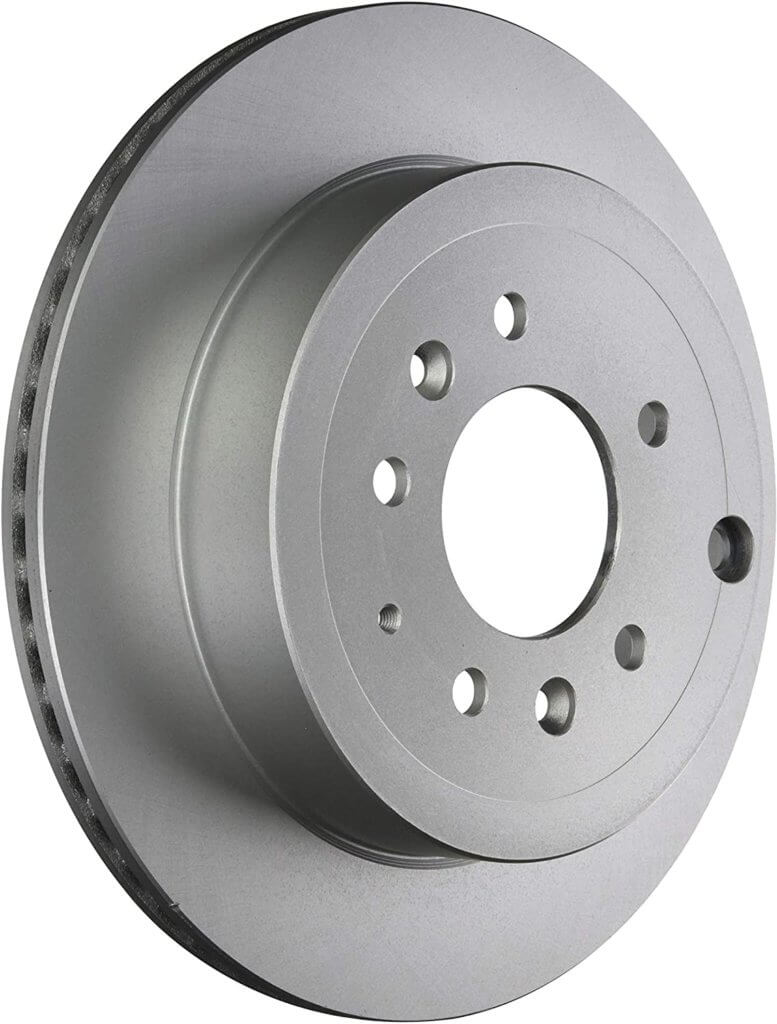
Rust prevention coating is applied to the hat, face, and cooling vanes
Several brake parts manufacturers offer coated rotors. The coating won’t protect the friction ring because it’s rubbbed off by the brake pads after the first few applications. But the coating does reduce rusting in the
cooling vanes. Rust-free cooling vanes prolong the life of the brake pads by keeping the friction ring surface cooler.
Some economy rotor manufacturers are now offering coated rotors, but applying an anti-corrosive coating to a low quality rotor is like putting lipstick on a pig. If the base metal is of poor quality, the friction ring will begin to rust as soon as the coating wears off.
Why it’s important to remove rust from the inside hat area
Rust inside the hat area can prevent the rotor from sitting perfectly parallel with the wheel hub. As little as .002″ thickness of rust can cause the rotor to wobble and cause brake pedal pulsation.
If you have the rotor off and plan to reuse it, always remove the rust from inside the hat area (the portion that mates to the wheel hub) and the outer hat. Purchase an abrasive disc and chuck it into are drill. Then spin it around the hat area until the rust is gone.
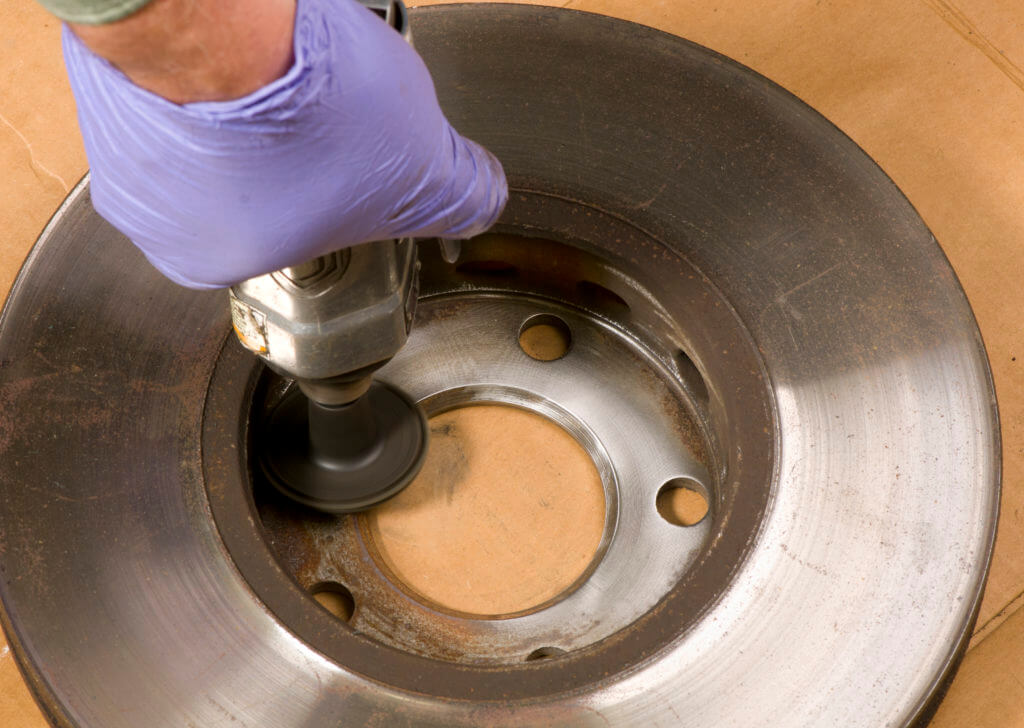
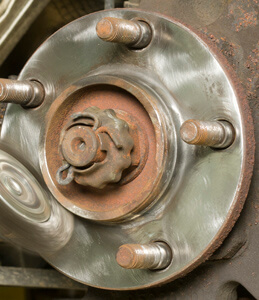
Clean rust off the wheel hub too. That’ll prevent brake pedal pulsation.
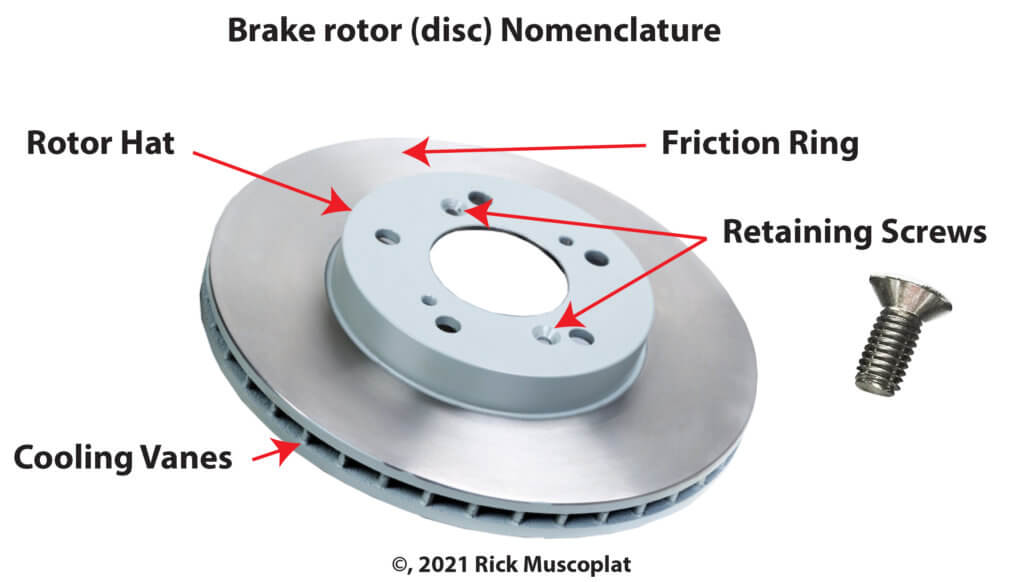
Know the parts of your brake rotor. All braking is done on the friction ring. The cooling vanes pump air through the rotor to remove heat and prevent brake pad fade. The rotor hat is what mounts the rotor to the wheel hub. The retaining screws are using during vehicle assembly to prevent the rotors from falling off the wheel hub. The screws aren’t needed after assembly. You can discard them when doing a brake job.
©, 2021 Rick Muscoplat
Posted on by Rick Muscoplat